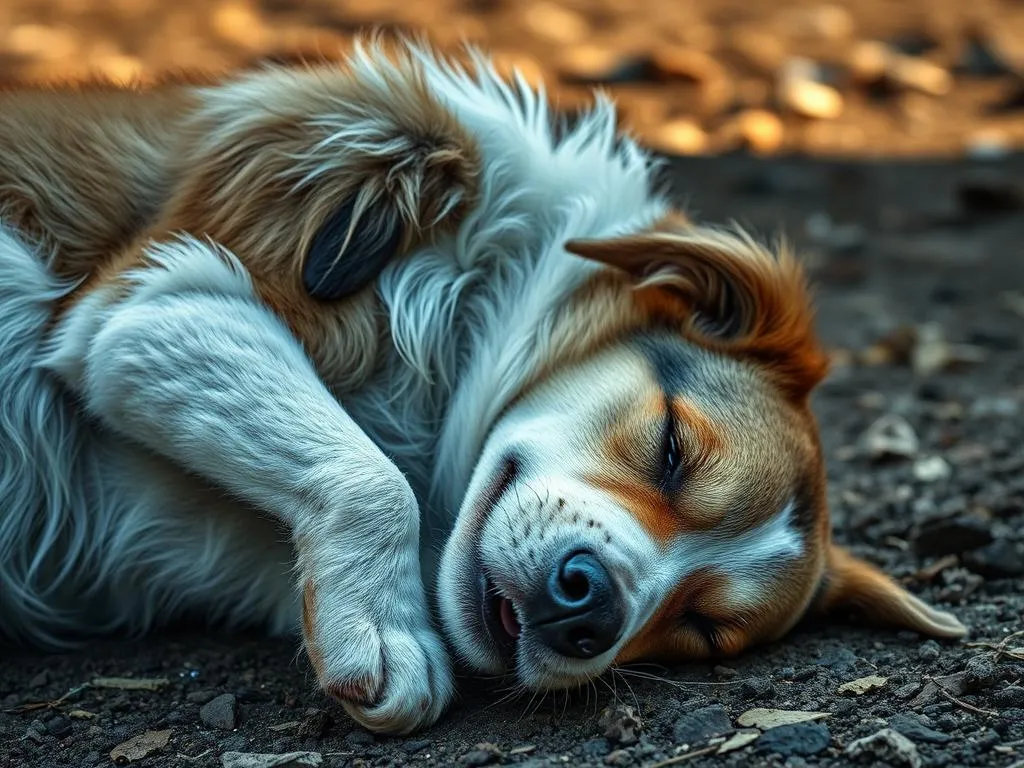
Introduction
Understanding dog behavior is essential for pet owners who wish to foster a healthy and harmonious relationship with their furry companions. Dogs exhibit a wide range of behaviors that often puzzle their human counterparts, and one such behavior is rolling on dead animals. This intriguing phenomenon raises questions about instinct, communication, and the natural world in which our dogs evolved.
In this article, we will delve into the reasons behind this behavior, exploring the instinctual roots, potential health risks, and behavioral implications for dog owners. By comprehending why dogs roll on dead animals, pet owners can better manage this behavior and ensure the well-being of their beloved pets.
The Instinctual Nature of Dogs
Evolutionary Background
To grasp why dogs engage in the behavior of rolling on dead animals, it is crucial to consider their evolutionary background. Dogs are descendants of wolves, and many of their behaviors are rooted in ancestral instincts. Wild canines, like wolves and foxes, have been observed engaging in similar actions, often as a means of survival.
Domestication has altered many aspects of canine behavior, yet instinctual traits remain. Rolling on dead animals is thought to be a remnant behavior from their wild ancestors, signaling a connection to their primal instincts. Understanding this historical context provides insight into why such behaviors persist, even in our well-loved pets.
The Role of Scent
Scent plays a vital role in canine behavior. Dogs have an extraordinary sense of smell—approximately 10,000 to 100,000 times more sensitive than that of humans. This heightened olfactory ability allows dogs to perceive scents in ways that we cannot even begin to comprehend.
When a dog rolls on a dead animal, they are not just indulging in a peculiar pastime; they are engaging with the world through their most powerful sense. For dogs, scents carry information about their environment, other animals, and even potential threats. Consequently, rolling in a dead animal allows them to gather and disseminate important olfactory information.
Reasons Why Dogs Roll on Dead Animals
Communication with Other Dogs
Rolling in scents, especially those of dead animals, serves as a form of communication among dogs. The act can signal to other dogs information about the individual’s presence, status, or even recent findings. A dog that rolls in a dead animal may be attempting to convey its discovery to others in the area.
This behavior can also create a shared experience among dogs. The scent becomes a form of social currency, allowing dogs to connect and bond over shared experiences. This instinctual communication method emphasizes the importance of scent in a dog’s social interactions.
Territorial Behavior
Another reason why dogs roll on dead animals pertains to territoriality. By rolling in a dead animal, a dog is effectively marking its territory with its scent. This behavior can be a way for dogs to claim or defend a resource, as well as to establish dominance in an area.
Territorial behavior is common among canines and is often exhibited in various forms. Rolling on a dead animal may be an instinctual way for a dog to assert its presence and communicate to other dogs that it has claimed the area.
Hunting Instincts
The act of rolling on dead animals is also closely related to a dog’s hunting instincts. In the wild, canines often cover their own scent to avoid detection by potential prey. By rolling in the scent of a dead animal, dogs may be trying to disguise their own scent to approach prey more effectively.
This behavior is a fascinating reminder of the hunting strategies employed by wild canines. While domesticated dogs may no longer rely on hunting for survival, these instincts still linger, manifesting in behaviors like rolling on dead animals.
Comfort and Familiarity
Rolling on dead animals may also provide dogs with a sense of comfort and familiarity. The act of rolling in scents can be soothing, reminiscent of the pack behavior displayed in their wild ancestors. For dogs, familiar scents can evoke feelings of security and belonging, helping them feel more at home in their environment.
This behavior can also be linked to pack dynamics, where dogs use scent to reinforce social bonds within their group. By rolling in scents, dogs engage in self-soothing behavior that reflects their instinctual need for connection and comfort.
Potential Risks and Health Concerns
Parasites and Diseases
While the behavior of rolling on dead animals may be instinctual, it comes with potential health risks. Dead animals are often breeding grounds for parasites such as fleas, ticks, and mites. By rolling in these carcasses, dogs can expose themselves to these parasites, leading to infestations that may require veterinary intervention.
Additionally, dead animals can harbor various diseases that can be transmitted to dogs. Rabies, leptospirosis, and other infectious diseases can pose serious health risks. It is essential for dog owners to be vigilant about their pets’ behavior, especially if they are inclined to roll in dead animals.
Skin Irritations and Allergies
Beyond parasites and diseases, rolling in dead animals can also lead to skin irritations and allergies. Dogs may develop rashes, hot spots, or infections as a result of contact with decaying matter. Symptoms to watch for include excessive scratching, redness, swelling, or discharge.
If a dog frequently rolls in dead animals, owners should be proactive in monitoring their pet’s skin health. Regular grooming can help identify issues early, and veterinary consultations may be necessary if any concerning symptoms arise.
Behavioral Implications for Dog Owners
Training and Management
For dog owners who wish to discourage the behavior of rolling on dead animals, effective training and management strategies are essential. One approach is to provide clear commands and guidance when out on walks. Teaching commands such as “leave it” can help redirect a dog’s attention away from potential temptations.
Positive reinforcement techniques can also be beneficial. When a dog walks past a dead animal without rolling, offering praise or treats reinforces desirable behavior. Consistent training and management can reduce the likelihood of a dog rolling in dead animals.
Alternative Activities
Engaging dogs in alternative activities can help redirect their instincts into more positive outlets. Regular exercise, such as daily walks, runs, or play sessions, can help satisfy a dog’s natural curiosity and energy levels. Providing interactive toys or puzzle feeders can also stimulate a dog mentally, reducing the desire to engage in undesirable behaviors like rolling on dead animals.
Exploring new environments or activities, such as agility training or fetch games, can also keep a dog occupied and focused on more appropriate behaviors. By providing ample stimulation, dog owners can help mitigate the urge to roll in dead animals.
Understanding Your Dog’s Needs
A key aspect of managing dog behavior is understanding a dog’s needs. Boredom and lack of stimulation can lead to undesirable behaviors, including rolling on dead animals. Pet owners should be attentive to signs of stress, anxiety, or boredom and take proactive steps to address these issues.
Regular physical exercise and mental challenges are crucial for maintaining a dog’s overall well-being. Engaging with your dog through training, play, and socialization can strengthen your bond and reduce the likelihood of them seeking out dead animals for entertainment.
FAQs about Dogs Rolling on Dead Animals
Is this behavior normal?
Yes, rolling on dead animals is a normal behavior rooted in a dog’s instincts. While it may seem odd to humans, it serves various purposes for dogs, including communication, territorial marking, and comfort. Understanding that this behavior is natural can help pet owners manage it effectively.
What should I do if my dog rolls in something dead?
If your dog rolls in something dead, the first step is to remove them from the area to prevent further exposure. Clean your dog thoroughly using pet-safe shampoo, and check for any signs of skin irritation or parasites. It’s also advisable to consult with a veterinarian if you have concerns about potential health risks.
How can I prevent my dog from rolling in dead animals?
Preventing a dog from rolling in dead animals requires consistent training and management. Teaching commands like “leave it” and providing alternative activities can help redirect their behavior. Additionally, keeping a close eye on your dog during walks and providing ample mental and physical stimulation can reduce their urge to engage in this behavior.
Conclusion
In summary, understanding why dogs roll on dead animals sheds light on a complex interplay of instinctual behavior, communication, and health considerations. This behavior, while perplexing to many pet owners, is deeply rooted in a dog’s evolutionary history and serves various purposes that are essential for their social and survival needs.
By recognizing the instinctual nature of dogs, the potential health risks, and effective management strategies, dog owners can foster a better understanding of their pets. Ultimately, this knowledge empowers owners to create a healthier, more fulfilling environment for their canine companions.
Encouraging observation and open communication with your veterinarian can further enhance your understanding of your dog’s behavior and ensure their well-being in an ever-evolving world.









